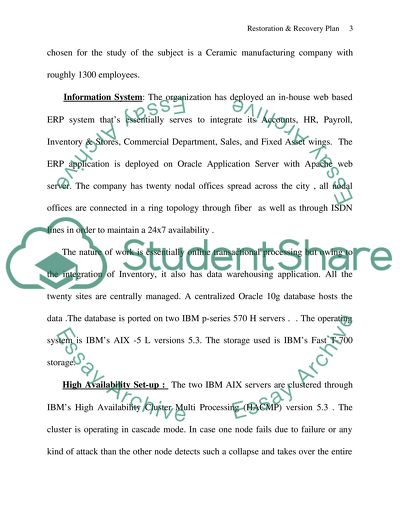Cite this document
(Restoration and Recovery Plan: Ceramic Manufacturing Company Case Study, n.d.)
Restoration and Recovery Plan: Ceramic Manufacturing Company Case Study. https://studentshare.org/information-technology/1499221-restoration-and-recovery-plan
Restoration and Recovery Plan: Ceramic Manufacturing Company Case Study. https://studentshare.org/information-technology/1499221-restoration-and-recovery-plan
(Restoration and Recovery Plan: Ceramic Manufacturing Company Case Study)
Restoration and Recovery Plan: Ceramic Manufacturing Company Case Study. https://studentshare.org/information-technology/1499221-restoration-and-recovery-plan.
Restoration and Recovery Plan: Ceramic Manufacturing Company Case Study. https://studentshare.org/information-technology/1499221-restoration-and-recovery-plan.
“Restoration and Recovery Plan: Ceramic Manufacturing Company Case Study”. https://studentshare.org/information-technology/1499221-restoration-and-recovery-plan.


